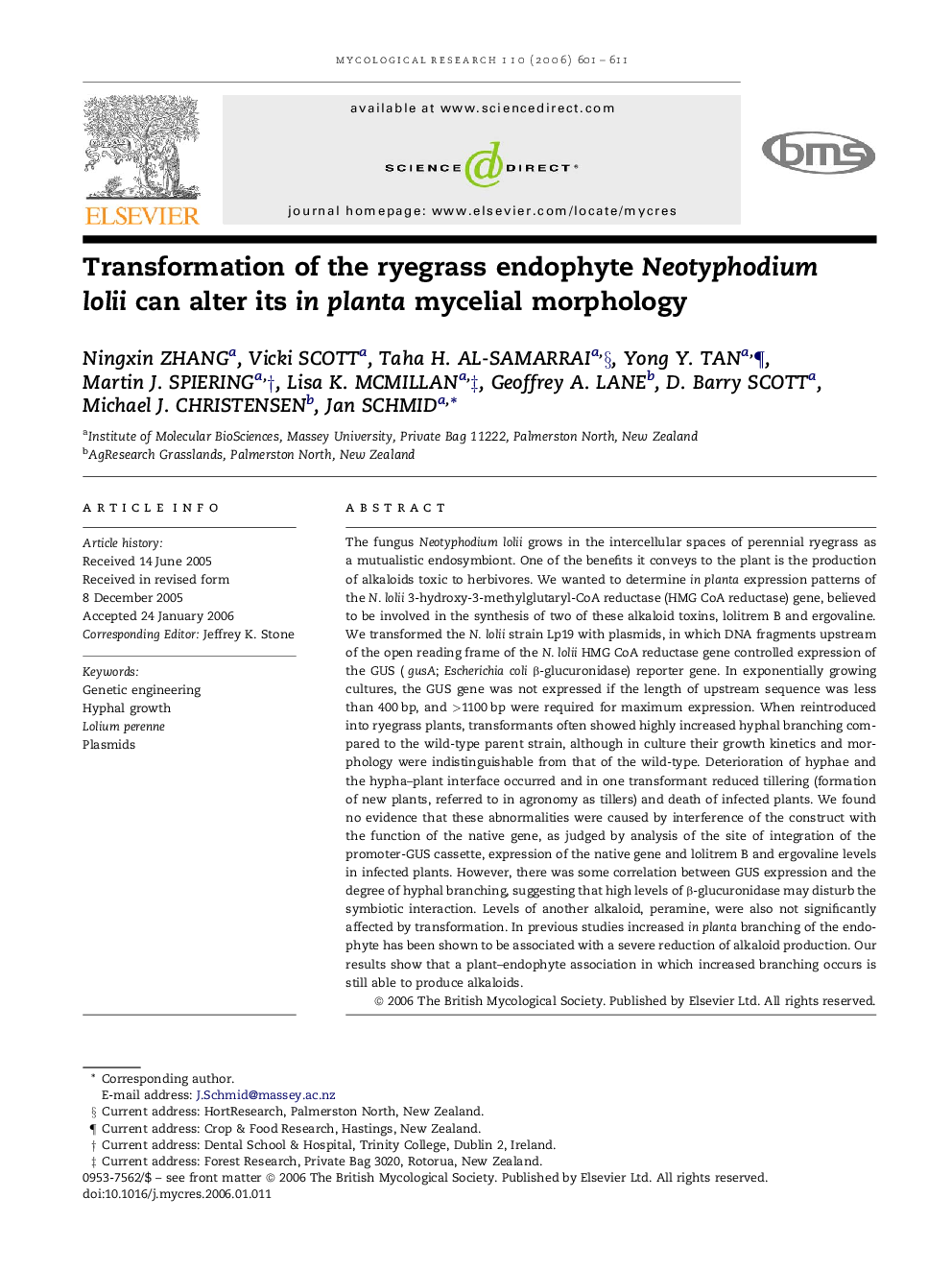| کد مقاله | کد نشریه | سال انتشار | مقاله انگلیسی | نسخه تمام متن |
|---|---|---|---|---|
| 4358151 | 1300128 | 2006 | 11 صفحه PDF | دانلود رایگان |

The fungus Neotyphodium lolii grows in the intercellular spaces of perennial ryegrass as a mutualistic endosymbiont. One of the benefits it conveys to the plant is the production of alkaloids toxic to herbivores. We wanted to determine in planta expression patterns of the N. lolii 3-hydroxy-3-methylglutaryl-CoA reductase (HMG CoA reductase) gene, believed to be involved in the synthesis of two of these alkaloid toxins, lolitrem B and ergovaline. We transformed the N. lolii strain Lp19 with plasmids, in which DNA fragments upstream of the open reading frame of the N. lolii HMG CoA reductase gene controlled expression of the GUS (gusA; Escherichia coli β-glucuronidase) reporter gene. In exponentially growing cultures, the GUS gene was not expressed if the length of upstream sequence was less than 400 bp, and >1100 bp were required for maximum expression. When reintroduced into ryegrass plants, transformants often showed highly increased hyphal branching compared to the wild-type parent strain, although in culture their growth kinetics and morphology were indistinguishable from that of the wild-type. Deterioration of hyphae and the hypha–plant interface occurred and in one transformant reduced tillering (formation of new plants, referred to in agronomy as tillers) and death of infected plants. We found no evidence that these abnormalities were caused by interference of the construct with the function of the native gene, as judged by analysis of the site of integration of the promoter-GUS cassette, expression of the native gene and lolitrem B and ergovaline levels in infected plants. However, there was some correlation between GUS expression and the degree of hyphal branching, suggesting that high levels of β-glucuronidase may disturb the symbiotic interaction. Levels of another alkaloid, peramine, were also not significantly affected by transformation. In previous studies increased in planta branching of the endophyte has been shown to be associated with a severe reduction of alkaloid production. Our results show that a plant–endophyte association in which increased branching occurs is still able to produce alkaloids.
Journal: Mycological Research - Volume 110, Issue 5, May 2006, Pages 601–611